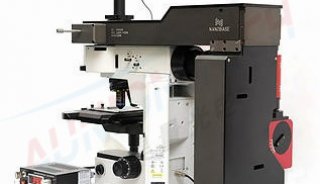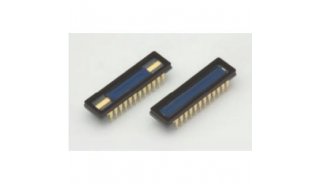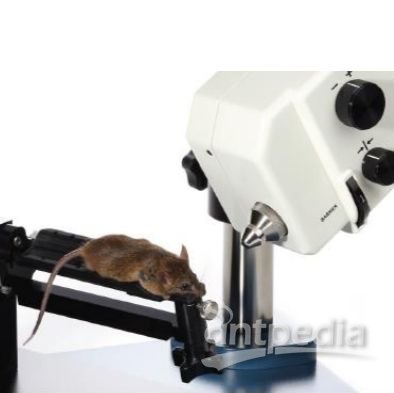A Method for Structure-2
CD Spectroscopy
CD spectra for peptides and reference solutions were recorded at 298 K on a Jasco J-920 CD spectrometer with a 1-mm quartz cuvette. Spectra were collected and averaged over 16 scans from wavelengths 190 to 250 nm with a 0.1-nm step resolution. CD measurements were performed and analyzed to confirm the effects of TFE on the secondary structure of the peptides (14, 15). In our study, we analyzed the peptides by using CD analysis package DICHROWEB (www.cryst.bbk.ac.uk/cdweb/html) (16).
NMR Spectroscopy
Initial experiments in our study included 1H-1H COSY (correlation spectroscopy) and 1H-1H TOCSY (total correlation spectroscopy). The COSY spectra were used to correlate 1H atoms that were ≤3 bonds apart, and to determine the 3JHN Hα coupling values between HN and Hα, whereas the TOCSY spectra were used to correlate all 1H atoms within a spin system that were ≤3 bonds apart (17). In addition, 1D and 2D 1H NMR data sets of the peptides were collected on a Bruker AVANCE 500 spectrometer. Unless otherwise stated, 1H detected spectra were acquired at a repetition rate of 1.5 s−1 at 293 K with water frequency centered on carrier frequency. For structural determination, phase-sensitive 2D 1H-1H NOESY, 1H-1H COSY, and 1H-1H TOCSY data sets (MLEV17) were recorded at 293 K with a presaturation or with a 3–9–19 pulse sequence for water suppression. 1H detected 2D DOSY data sets were recorded using a stimulated-echo sequence with bipolar-gradient pulses and 32 t1 blocks of 64 transients each. NMR data sets were processed using Bruker XwinNMR 3.5.
Structural Determination
Structural determination of the peptides followed the procedures as described previously (10). Briefly, spin systems (i.e., amino acid residues) were identified through chemical shifts and TOCSY cross-peak patterns. Distance constraints determined from integration of the 250-ms NOESY spectra were classified into four groups: strong, medium, weak, and very weak corresponding to interproton distance ranges of <2.3, 2.0–3.5, 3.3–5.0, and 4.8–6.0 Å, respectively. The 3JHN Hα coupling values determined from COSY spectra were averaged over a distribution of dihedral angles. Assessment of hydrogen bonding was carried out on the basis of Hα i –HN i + 3, and Hα i –HN i + 4 observed NOESY connectivities, dihedral angles, and chemical shift index values. For residues involved in hydrogen bonding, hydrogen bonds between CO i and HN i+4 were included as constraints by restraining r H–O to 1.2–1.9 Å and r N–O to 1.8–2.9 Å.
From the NMR-derived structural constraints, two series of structural calculations were performed with or without added hydrogen bonds to assess the effect of adding suspected hydrogen bonds into the structure calculation. All structural calculations were based on previous studies using the XPLOR 3.1 software package (10). Final calculated structures were energy minimized with 2,000 conjugate gradient steps before processing to the restrained annealing molecular dynamics calculation. A total of 33 and 21 UA159sp and 43 and 36 TPC3 (with and without hydrogen bonds included within the simulation) lowest energy structures were retained that had no violations of NOESY constraints >0.5 Å (18). The overall quality of these refined structures was examined with the program PROCHECK (19). Except for random coil sections, all backbone dihedral angles resided in the well-defined, acceptable regions of the Ramachandran plot. Three-dimensional structures of UA159sp and TCP3 determined from NMR were constructed by computer simulation using the VMD software (http://www.ks.uiuc.edu/Development).
Construction of comC Mutant That Was Defective in Producing CSP
To assay quorum sensing (QS) activation in response to addition of a peptide without interference by endogenous CSP from a wild-type strain, a comC mutant that was unable to produce, but still responded to CSP was constructed in S. mutans GS5 using the strategy as described previously (20). Following genetic recombination via allelic exchange, the comC deletion mutant was created by insertion of a spectinomycin (Specr) resistance cassette (21) into the comC gene of strain GS5. The mutant was then confirmed by polymerase chain reaction (PCR) and sequencing of the junction site of the Spec cassette as described previously (20). The resulting mutant was named SMdC and was used as a negative background strain of signaling peptide (CSP) for CSP-dependent assays of genetic competence, lacZ reporter, and bacteriocin production.
Construction of lacZ Transcriptional Reporter Strains
To assay QS activation in response to addition of a peptide, we constructed two types of lacZ transcriptional reporter strains that represented two levels of QS-activated gene expression. The first was a lacZ reporter gene fused to the comDE promoter, which allowed monitoring of the activity of the comDE promoter in response to a test peptide. The second strain was a lacZ reporter gene fused to the promoter of nlmAB, the gene encoding a nonlantibiotic bacteriocin and its expression directly controlled by the ComE (6, 22). This strain allowed assay of comDE-controlled bacteriocin production.
For the first reporter strain, we simply transformed previously constructed vector pYH2 (10) into the comC mutant (SMdC) to generate SMdC-pYH2 (PcomDE::lacZ, comC −, Specr, Kanr). pYH2 was constructed in such a way that the comDE promoter was fused to a promoterless lacZ gene on the backbone of Streptococcus–Escherichia coli shuttle vector pSL. The vector pSL was also transformed into the same mutant SMdC and used as a background control (SMdC-pSL). These strains were then assessed for lacZ reporter activity in response to addition of peptides.
For the second reporter strain, we generated a chromosomal nlmAB–lacZ fusion strain by transforming a PnlmAB::lacZ fusion construct pOMZ47 (6) into both comC mutant SMdC and wild-type GS5. The resulting reporter strains were confirmed by PCR and sequencing of the fusion sites as described previously (6). The confirmed reporter strains were respectively named SMdC-PnlmAB (PnlmAB::lacZ, comC − , Kanr, Specr) and SMGS5-PnlmAB (PnlmAB::lacZ, Kanr). The strain SMGS5-PnlmAB was used a positive control.




















